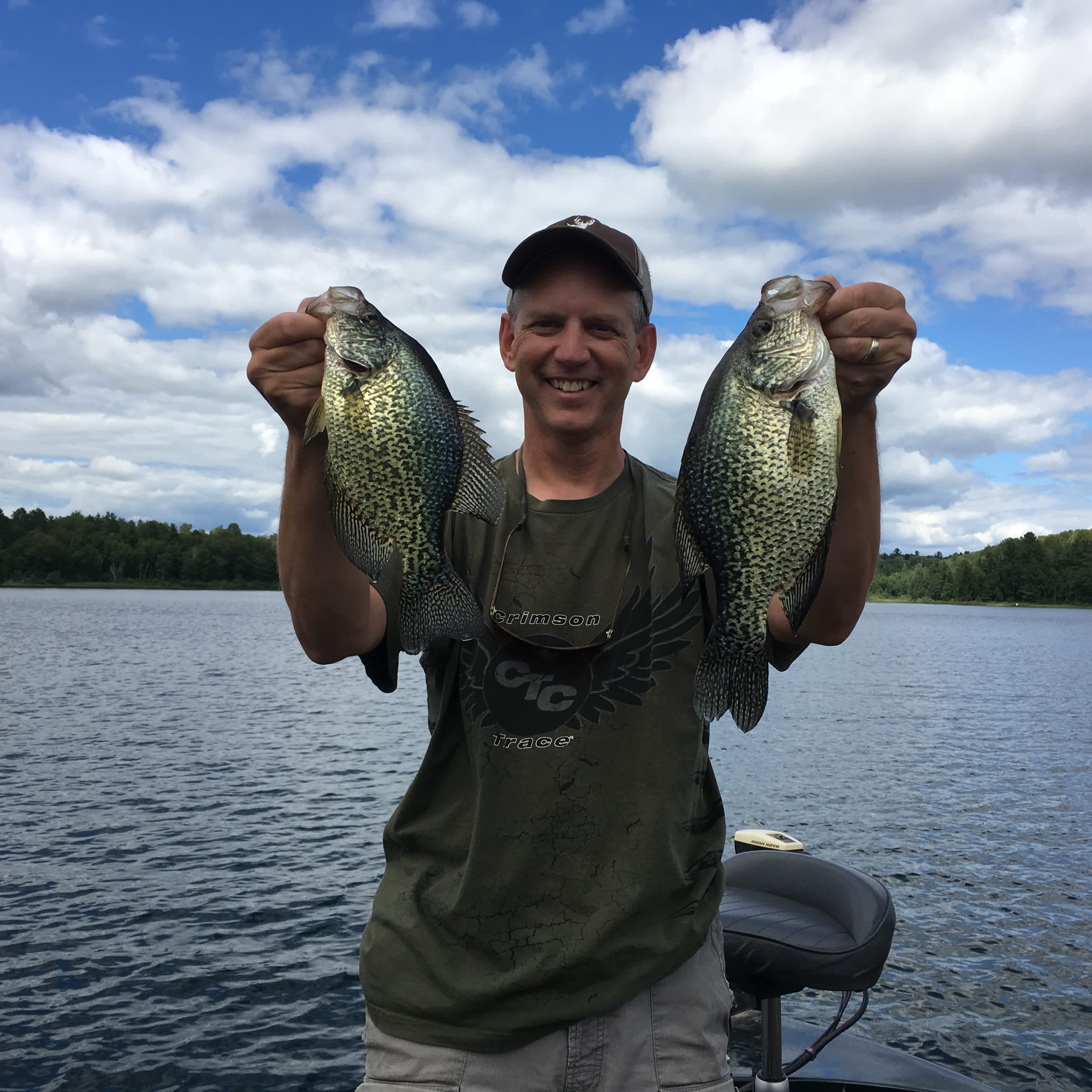3 Tips for Suspended Summertime Crappies
Dave Maas 08.17.16

Anglers often experience success on slab crappies during spring, when the fish are shallow and relating to cover such as fallen trees, stumps, docks, brushpiles and weeds. However, after the spawning season is complete, crappies pull away from the shoreline and spend much of their time suspended over open water. There, they pursue tiny aquatic animals called zooplankton, which in turn are feeding on vegetative phytoplankton. Minnows are also on the menu.
During daylight hours in the summer, plankton are usually found in deep water because these aquatic animals are sensitive to light. As the sun sinks lower in the west, however, plankton rise toward the surface, bringing crappies along for the ride. So what’s the best way to find and catch these nomadic fish?
1: Trust your electronics. And before you tune me out thinking I’m going to say you need the latest and greatest fishfinder, you don’t. The electronics I have on my boat are two flashers from 1994 (that is not a misprint), but they still work well, so I’ve never felt the need to change. The method is simple; what is tough is trusting what you see on the screen.
Begin by checking open-water areas near sunken islands, underwater points, inside turns and portions of shoreline with especially good weed growth on the drop-off. After you learn the depth of the deep weedline, let’s say it’s 15 feet in a Midwest natural lake, move your boat into 20-25 sweet and begin looking for suspended fish. Depending on time of day, light conditions, waves and many other factors that are beyond my understanding, you could spot crappies, as well as suspended sunfish, anywhere from 5 to 15 feet down in 20 to 25 feet of water.
2: Cast to the suspended fish you mark on your electronics. The marks might be small sunfish, but the only way to know for sure is to catch a few of them. Keep in mind the school might scatter a bit when you drive over them, so it pays to fan-cast the area to relocate fish.
My No. 1 search lure – by far – for summertime crappies is a tube jig. And specifically, I like the 1/32-ounce minnow-head style jigs rigged with a soft-plastic tube. If this sounds like an advertisement, then so be it, but you can buy enough Southern Pro brand jig heads and tubes (80-piece kit shown below) to hammer untold numbers of crappies for $5.88 right now at Cabela’s.

When the wind is strong, or the fish are deeper than 10 feet below the surface, I like to switch to a 1/16-ounce jig head. As for colors, I like to start with green/chartreuse tubes like the one below and have a buddy use blue/white. I prefer 4-pound-test Trilene XL (clear) spooled on an ultralight rod and reel.

3: Swim the tube jig, don’t jig it. Forget about keeping your rod tip between 10 o’clock and 11 o’clock like you usually do when jigging for bass and walleyes. Instead, lower your rod tip to 7 o’clock and then slowly retrieve the jig/tube combo in a regular cadence of 12-inch pulls and pauses/drops. This rod position also minimizes the wind’s effect on your light line. The idea is to have the jig head dart side to side like a minnow during the pulls, and glide downward like an injured minnow during the pauses.If the crappies are deep, you’ll need to count down your jig for several seconds before beginning your retrieve. Experiment until you find the best count-down time and speed of retrieve.
Important note: Crappies usually don’t strike with the quick “rap, rap, rap” of a small sunfish, or the single “thump” followed by heavy weight of a bass slowly swimming away. Instead, imagine how it would feel to have your tube jig snag a wet sock that’s floating in the water. The sock doesn’t strike; all you feel is weight. At that moment, simply set the hook with a gentle sweep of the rod and then begin reeling.
Finally, when you find a decent school of suspended crappies, mark the location on your fishfinder, handheld GPS or commit it to memory. Quite often these summertime schools tend to hang out in the same general locations year after year. As evidence, I call your attention to the photo at the beginning of this article. I’d hadn’t fished this particular natural lake in north-central Minnesota for crappies in 25 years, but when I returned this August, I motored to a former honey-hole (mid-lake sunken island) and the suspended crappies lit up my flasher. They were down 8-10 feet in 22 feet of water. They weren’t directly on top of the hump, which tops out at 8 feet, but they were still relating to it, about 20 yards away.
Anyone can catch spawning crappies during spring. This summer, get away from the shoreline and find those suspended fish that haven’t been bothered by anglers for months!

